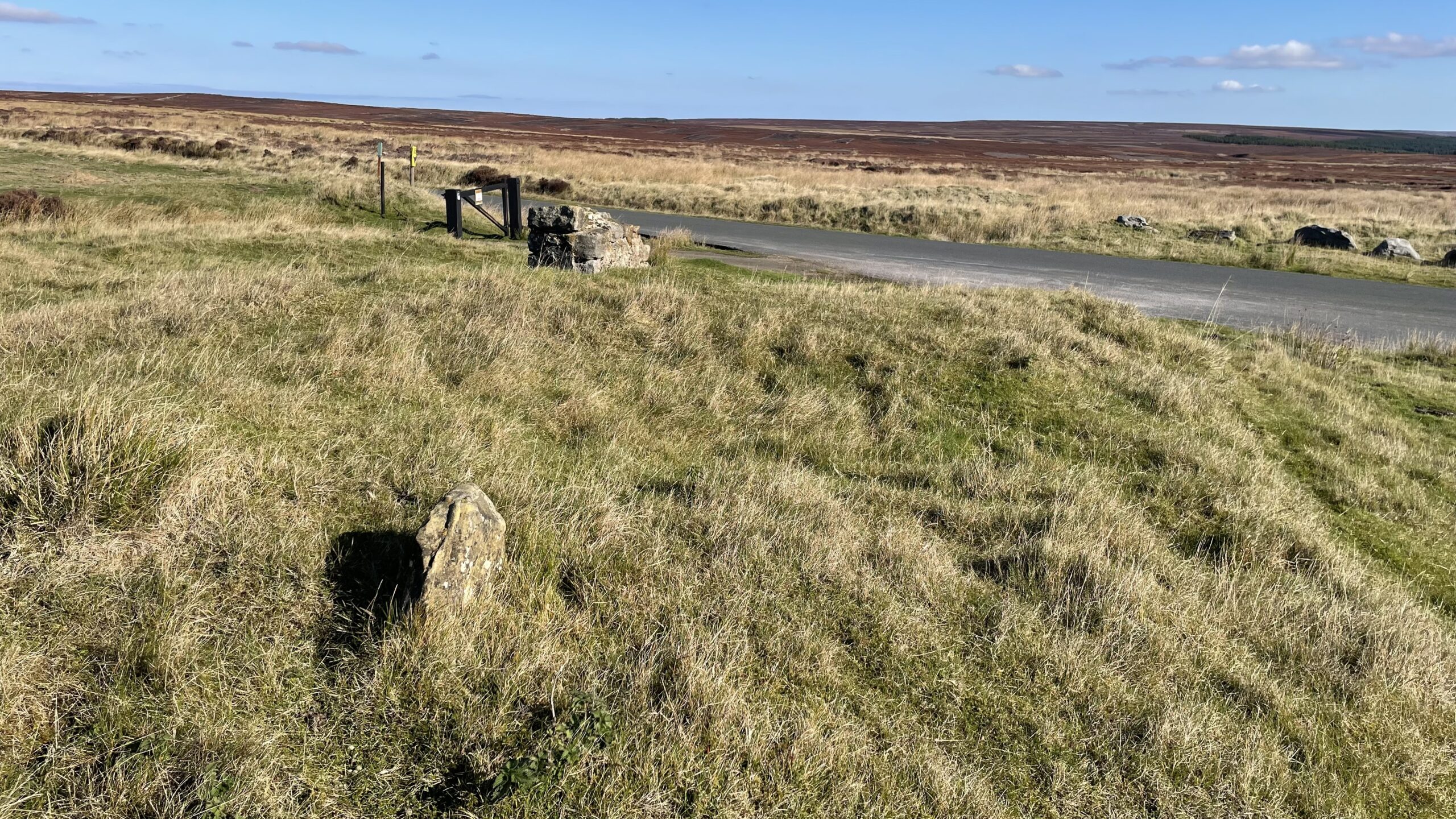A lonely crossing on the Lyke Wake Walk. Halfway between exhaustion and achievement. This was once the place where weary walkers would find their support party, waiting with flasks of tea and stodgy puddings to fortify them for the bleak march across Wheeldale Moor. That was half a century ago. The ruin that once stood here, Hamer House, has long since crumbled to a mere mound, a short stretch of rubble wall the only clue that anything human ever defied the wind here.

Yet once, this desolate spot was alive with voices and trade. The Lettered Board Inn stood here, a drovers’ refuge for panniermen, colliers and smugglers travelling this ancient route across the high moor. Farmers from the Esk Valley stopped by, their carts laden with coal from the northern bell pits, bound south for Cropton, Hutton-le-Hole and Beadlam to fetch lime. They used it to sweeten the fields and to coat their buildings in the chalky armour of limewash. A primitive barter economy thrived on these windswept heights: coal for lime, lime for life1Burns, Tom Scott. “Round and About The North Yorkshire Moors: A Glimpse of the Past”. Page 105. M.T.D. Rigg Publications. Reprinted 1989..
Around the inn stretched ‘improved’ grassland, where sheep and cattle once grazed. The outline of those fields can still be made out, ghostlike in the heather. A family once lived and worked here, fashioning besoms—brooms bound from twigs—and carrying them six miles to Lealholm station for a penny a dozen. Hard lives, modest rewards.
Then came tragedy. One December morning in 1879, two young men, cousins both named George—Hick and Atkinson—were found dead in their beds. Hick was the landlord’s son. No struggle, no sign of violence, only silence. The cause was never proven, though it was thought to be poisoning by carbonic gases from a turf fire kept alight in the room below. Others said the walls had been freshly plastered, the doors swollen shut, the air sealed out. Whatever the truth, the mystery of their deaths reached even the desk of the Home Secretary2Leeds Mercury | 03 January 1880 | The Mysterious Deaths Near Rosedale. | British Newspaper Archive https://www.britishnewspaperarchive.co.uk/viewer/bl/0000076/18800103/036/0010?noTouch=true3Leeds Mercury | 10 January 1880 | THE MYSTERIOUS DEATHS AT ROSEDALE, NEAR PICKERING. | British Newspaper Archive. https://www.britishnewspaperarchive.co.uk/viewer/bl/0000076/18800110/035/00104Leeds Mercury | 23 January 1880 | THE MYSTERIOUS DEATHS NEAR ROSEDALE | British Newspaper Archive | https://www.britishnewspaperarchive.co.uk/viewer/bl/0000076/18800123/031/0007.
Hamer House survived for a time as a dwelling after losing its licence. The last occupants, the Boddy family, left in the 1930s. Since then, the moor has taken back its own. What remains now is not a ruin so much as a memory—one more lost fragment of the age when men and smoke and trade still defied the silence of the North York Moors.
- 1Burns, Tom Scott. “Round and About The North Yorkshire Moors: A Glimpse of the Past”. Page 105. M.T.D. Rigg Publications. Reprinted 1989.
- 2Leeds Mercury | 03 January 1880 | The Mysterious Deaths Near Rosedale. | British Newspaper Archive https://www.britishnewspaperarchive.co.uk/viewer/bl/0000076/18800103/036/0010?noTouch=true
- 3Leeds Mercury | 10 January 1880 | THE MYSTERIOUS DEATHS AT ROSEDALE, NEAR PICKERING. | British Newspaper Archive. https://www.britishnewspaperarchive.co.uk/viewer/bl/0000076/18800110/035/0010
- 4Leeds Mercury | 23 January 1880 | THE MYSTERIOUS DEATHS NEAR ROSEDALE | British Newspaper Archive | https://www.britishnewspaperarchive.co.uk/viewer/bl/0000076/18800123/031/0007

Leave a Reply